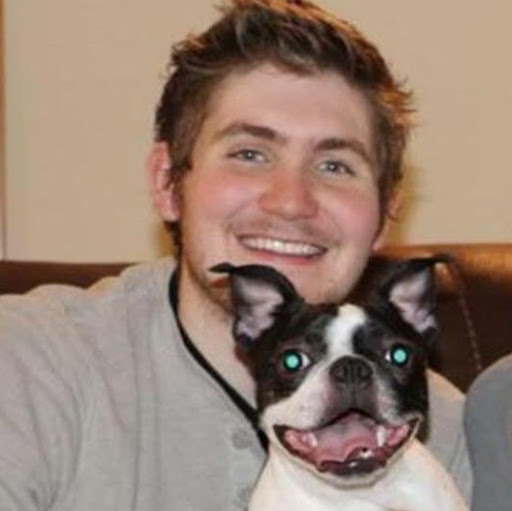David Alan Stokes
age ~54
from Amherst, OH
- Also known as:
-
- David A Stokes
- David A Sotkes
David Stokes Phones & Addresses
- Amherst, OH
- Louisville, KY
- Firestone, CO
- 1218 Harvest Ct, Jeffersonville, IN 47130 • 8122846447
- Sperry, OK
- New Albany, IN
- 884 Chestnut Ln, Amherst, OH 44001
Work
-
Position:Administrative Support Occupations, Including Clerical Occupations
Education
-
Degree:Associate degree or higher
Languages
English
Specialities
Counseling
Name / Title
Company / Classification
Phones & Addresses
Owner
Terrina Interiors Ltd
Draperies & Curtains - Retail & Custom. Interior Decorators & Designers. Venetian Blinds - Dealers
Draperies & Curtains - Retail & Custom. Interior Decorators & Designers. Venetian Blinds - Dealers
Glenora PO Box 53030, Edmonton, AB T5N 4A8
7804521561, 7804512487
7804521561, 7804512487
Owner
Terrina Interiors Ltd
Draperies & Curtains - Retail & Custom · Interior Decorators & Designers · Venetian Blinds - Dealers
Draperies & Curtains - Retail & Custom · Interior Decorators & Designers · Venetian Blinds - Dealers
7804521561, 7804512487
Director
EMERSON, STOKES, ELLIOTT & HARPER, PA
Incorporator
CLARENCE W. CHAPMAN & ASSOCIATES, LTD
Manager
Ak Industries Inc
Lumber and Other Building Materials, Nsk · Ret Lumber/Building Materials
Lumber and Other Building Materials, Nsk · Ret Lumber/Building Materials
3909 Oaklawn Dr, Louisville, KY 40219
5029696155
5029696155
Manager
Tumbleweed, Inc
Eating Place · Restaurant Chain
Eating Place · Restaurant Chain
2301 Riv Rd, Louisville, KY 40206
5028930323
5028930323
Manager
Mercer Transportation Co., Inc
Trucking Operator-Nonlocal
Trucking Operator-Nonlocal
10763 Turner Blvd, Longmont, CO 80504
3034859306
3034859306
Incorporator
WHISTFUL WHIMSY
308 Alcott Rd, Louisville, KY 40207
Medicine Doctors

David Stokes, Denver CO
view sourceSpecialties:
Counseling
Address:
1395 S Platte River Dr, Denver, CO 80223
3036033020 (Phone)
3036033020 (Phone)
Languages:
English
License Records
David Randell Stokes
License #:
47867 - Expired
Category:
Nursing Support
Issued Date:
Aug 6, 2002
Effective Date:
Nov 12, 2014
Expiration Date:
Aug 6, 2016
Type:
Medication Aide - 40 Hour
David Randell Stokes
License #:
47867 - Expired
Category:
Nursing Support
Issued Date:
Aug 6, 2002
Effective Date:
Mar 15, 2003
Expiration Date:
Aug 6, 2005
Type:
Medication Aide ICF-MR/Nursing Home
David Randell Stokes
License #:
53801 - Expired
Category:
Nursing Support
Issued Date:
Jan 25, 2002
Effective Date:
Nov 12, 2014
Type:
Nurse Aide
David Randell Stokes
License #:
78910 - Active
Category:
Nursing
Issued Date:
Nov 12, 2014
Effective Date:
Nov 12, 2014
Expiration Date:
Oct 31, 2018
Type:
Registered Nurse
Us Patents
-
Distribution Of Mail Pieces Across Print Jobs To Enhance Postal Discounts In A Production Printing Environment
view source -
US Patent:20130060377, Mar 7, 2013
-
Filed:Sep 2, 2011
-
Appl. No.:13/224836
-
Inventors:Ned Otey - Louisville CO, US
David Stokes - Longmont CO, US
Brent Winters - Longmont CO, US -
International Classification:G06F 7/00
-
US Classification:700224
-
Abstract:Systems and methods are provided for enhancing postal discounts. The system receives multiple print jobs, each print job assigned for printing at a different printing system. Each print job comprises mail pieces that correspond with capabilities of the assigned printing system. The system identifies mail pieces of the print jobs that have delivery addresses that are not confirmed by a mailing address database (“non-automated mail pieces”), and extracts non-automated mail pieces that may be produced at printing systems having different capabilities. Further, the system determines a threshold number of non-automated mail pieces to reach a bulk postal discount for a print job, and redistributes the extracted mail pieces across the print jobs based upon the threshold to increase the number of print jobs that reach the bulk postal discount.
-
Electronic Pre-Printed Form
view source -
US Patent:20140043645, Feb 13, 2014
-
Filed:Aug 10, 2012
-
Appl. No.:13/571808
-
Inventors:David L. Stokes - Longmont CO, US
Susan M. Saad - Broomfield CO, US
Michael G. Lotz - Longmont CO, US -
International Classification:G06K 15/02
-
US Classification:358 115
-
Abstract:A method is disclosed. The method includes receiving an input print job file including a form definition (formdef), determining whether the formdef is an N-up formdef and generating an output print job file by inserting a forms overlay into the input print job file as a pre-printed form if the formdef is an N-up formdef.
-
Modification Of Advanced Function Presentation (Afp) Print Jobs
view source -
US Patent:20190272128, Sep 5, 2019
-
Filed:Mar 1, 2018
-
Appl. No.:15/909147
-
Inventors:Gary Alan Koets - Longmont CO, US
Michael Glen Lotz - Longmont CO, US
David Lee Stokes - Longmont CO, US
Adam Alvin Swartz - Thornton, US -
Assignee:Ricoh Company, Ltd. - Tokyo
-
International Classification:G06F 3/12
-
Abstract:Combining multiple pages of an AFP print job into a single AFP output page that can be more efficiently printed is described. A print job is received, where pages in the print job begin with a first electronic marker indicative of a beginning of the page and ends with a second electronic marker indicative of an end of the page. A first page and a second page in the print job are identified to combine together into an output page, and an amount of offset for page contents of the second page is determined. The page contents of the second page are shifted by the amount of the offset. The first electronic marker is removed from the first page, the second electronic marker is removed from the second page, and page contents of the first page and shifted page contents of the second page are combined together into the output page. The output page is transmitted to a printer for printing.
-
Predictive Schedule-Based Tracking Of Incoming Print Jobs
view source -
US Patent:20150212774, Jul 30, 2015
-
Filed:Apr 8, 2015
-
Appl. No.:14/681956
-
Inventors:Ned Otey - Louisville CO, US
Brent Winters - Longmont CO, US
Joseph G. Frick - Adrian MI, US
David Stokes - Longmont CO, US -
Assignee:Ricoh Company, Ltd. - Tokyo
-
International Classification:G06F 3/12
G06K 15/02 -
Abstract:Systems and methods are provided for predictively tracking expected print jobs. The system comprises a memory that identifies categories of print jobs, and that stores rules that indicate how often print jobs will be received at a presentation system. The system also comprises a control unit operable to identify a rule for a category of print jobs, to analyze the rule to generate a predicted schedule of print jobs expected for receipt at the presentation system, and to determine whether expected print jobs have been received at the presentation system in accordance with the schedule. The control unit is further operable to generate an alert if an expected print job has not been received at the presentation system in accordance with the schedule.
-
Predictive Schedule-Based Tracking Of Incoming Print Jobs
view source -
US Patent:20150212775, Jul 30, 2015
-
Filed:Apr 8, 2015
-
Appl. No.:14/681965
-
Inventors:Ned Otey - Louisville CO, US
Brent Winters - Longmont CO, US
Joseph G. Frick - Adrian MI, US
David Stokes - Longmont CO, US -
Assignee:RICOH COMPANY, LTD. - Tokyo
-
International Classification:G06F 3/12
G06K 15/02 -
Abstract:Systems and methods are provided for predictively tracking expected print jobs. The system comprises a memory that identifies categories of print jobs, and that stores rules that indicate how often print jobs will be received at a presentation system. The system also comprises a control unit operable to identify a rule for a category of print jobs, to analyze the rule to generate a predicted schedule of print jobs expected for receipt at the presentation system, and to determine whether expected print jobs have been received at the presentation system in accordance with the schedule. The control unit is further operable to generate an alert if an expected print job has not been received at the presentation system in accordance with the schedule.
-
Predictive Schedule-Based Tracking Of Incoming Print Jobs
view source -
US Patent:20140176989, Jun 26, 2014
-
Filed:Dec 26, 2012
-
Appl. No.:13/726902
-
Inventors:Ned Otey - Louisville CO, US
Brent Winters - Longmont CO, US
Joseph G. Frick - Adrian MI, US
David Stokes - Longmont CO, US -
International Classification:G06F 3/12
-
US Classification:358 115
-
Abstract:Systems and methods are provided for predictively tracking expected print jobs. The system comprises a memory that identifies categories of print jobs, and that stores rules that indicate how often print jobs will be received at a presentation system. The system also comprises a control unit operable to identify a rule for a category of print jobs, to analyze the rule to generate a predicted schedule of print jobs expected for receipt at the presentation system, and to determine whether expected print jobs have been received at the presentation system in accordance with the schedule. The control unit is further operable to generate an alert if an expected print job has not been received at the presentation system in accordance with the schedule.
Isbn (Books And Publications)








Youtube
Myspace
Flickr
Plaxo

David Stokes
view sourceReading, UKPast: Software Development Manager at Sage Software I’m a highly experienced Software Development Manager, with a long track record of building, developing and retaining high performance teams. I’ve spent... I’m a highly experienced Software Development Manager, with a long track record of building, developing and retaining high performance teams. I’ve spent the last 14 years at Sage, the largest software company in the FTSE 100. I’m an effective leader, particularly around managing change in...

David Stokes
view sourceWashington, DC

David Stokes
view sourceInformation Security Manager at Massachusetts Wate...

David Stokes
view sourceFarécla Products

David Stokes
view sourceAPM at ADMI

David Stokes
view sourceBirmingham
Classmates

David Stokes
view sourceSchools:
Cradock High School Portsmouth VA 1971-1975
Community:
Sharon Smikle, Isaiah Wilson

David Stokes
view sourceSchools:
Whiteland Community High School Whiteland IN 1992-1996
Community:
Sandra Jarvis, John Spurr

David Stokes
view sourceSchools:
Pike County High School Zebulon GA 1986-1990

David Stokes
view sourceSchools:
Central Elementary School Lebanon IN 1955-1963, Lebanon Junior High School Lebanon IN 1963-1966
Community:
Kim Dale, Bill Greene, Jeremy Mize

David Stokes
view sourceSchools:
Knollwood Elementary School Decatur GA 1957-1962
Community:
Pamela Peters, Sarah Frank, Chris Allison

David Stokes
view sourceSchools:
Southeast High School Meridian MS 1969-1973
Community:
Alvin Blanks, Laura Johnson, Teresa Mcgowan

David Stokes
view sourceSchools:
Warwick High School Newport News VA 2001-2005
Community:
Collin Long, Ronald Fox
Googleplus

David Stokes
Work:
MSportUK.com - Editor (1999)
Factor41Media - Owner (1997)
DAM Creative - Studio Manager (2006)
Seven Worldwide Ltd - Pre-Media Team Leader (2003-2006)
Partner in Print - Studio Manager (2000-2003)
Factor41Media - Owner (1997)
DAM Creative - Studio Manager (2006)
Seven Worldwide Ltd - Pre-Media Team Leader (2003-2006)
Partner in Print - Studio Manager (2000-2003)
Education:
Loughborough University - Automotive Engineering
Tagline:
Trust me, I'm like a doctor...

David Stokes
Lived:
Longmont, CO
Work:
Ricoh Production Print Solutions - Software Engineer
Education:
Oklahoma State University–Stillwater - M.S. Mechanical Engineering, Oklahoma State University–Stillwater - B.S. Mechanical Engineering

David Stokes
Education:
Charles University in Prague, University of Idaho - Broadcasting & Digital Media
About:
My name is David Stokes, I am a Eugene born kid that attends school at the University of Idaho.
Bragging Rights:
Published Photographer, Documentarist, Still alive?

David Stokes
Work:
Lancaster Toyota Romford - General Sales Manager
Relationship:
Married

David Stokes
Work:
NAC - Line Pilot

David Stokes

David Stokes

David Stokes

David Stokes
view source
Elder David C. Stokes
view source
David Patrick Stokes
view source
David KushKhalifa Stokes
view source
David V Stokes
view source
Joshua David Stokes
view source
David Russell Stokes
view source
David Michael Stokes
view sourceGet Report for David Alan Stokes from Amherst, OH, age ~54













